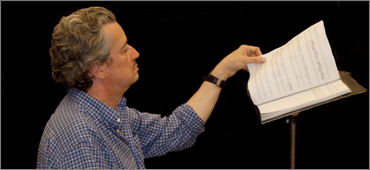
|
«Composing was my future, it had to be my life» First of all, thank you so much for the opportunity of this interview and for sharing with us your own perspective about music and composition and some insight view over your career and works through time. We will not follow chronology during the interview. -What can you tell us about your beginnings with music?, you were a very talented child at a very early age, studying violin with Hugo Mariani, at that time conductor of the National Symphony Orchestra of Costa Rica, the country of your mother, and where you live at that time. Which are your remembrances of that era in your life, and how the influence of those first studies conducted you to Henry Lasker, once in Boston, when you started to study composition? Was that the instant you decided to become a composer? -Once you took the decision to move to New York, and after a time dedicated to chamber works, rock compositions, theater music, and background scores for films, you lived one important turning point, when you gained the attention of Neil Diamond. Please, tell us about this story, how do you meet him for the first time, and how did he propose you to move to L.A. and work for him? -Was your collaboration for Jonathan Livingston Seagull, and the success of this score, the moment of truth, that instant you definitely knew your feet were walking the right path to fulfill your dreams as a composer? -During your long career, you have worked with such legends as Barbra Streisand, Brian May,(Queen), Stevie Wonder, John Denver, Al Jarreau, Dionne Warwick, Diana Ross, Natalie Cole, Whitney Houston, or Plácido Domingo, the famous Spanish tenor, among many more. Could you, please, share with us an overview about all these collaborations and maybe some anecdote working with all these gigantic artists? I will say that Domingo impressed me with the sheer depth and power of his musical knowledge. His mind is astounding. He carries so many opera roles around in his head and knows each role down to the last detail. Added to that, he can quickly learn new songs and be just as consummate a perfectionist performing and recording all manner of new material. His gift and ability as an artist is unprecedented. He is truly one of the greatest tenors ever. I also want to relate a remarkable experience I had with Streisand. I arranged and conducted some songs for her on an album called Wet. I arranged the title song and she wanted to record it live, almost classically, which she rarely does. On the night of that particular recording we were at Capitol Records Studios in Los Angeles. I had a fairly large studio orchestra and I rehearsed them a few times preparing the arrangement. Soon she walked out of the control room onto the studio floor and stood about 10 feet away from me with a single microphone over her. We began the first take, when she began to sing, you could feel the electricity in the room, the hairs on the back of my neck stood up. I felt shivers. In an instant I understood why she is considered such a great artist the world over. We did 5 takes, and the 5th take, intact and live, is what is on the CD. -Focusing in your projects with John Denver specifically, there is a particular Cd that I consider one of my favorites, “Lee Holdridge conducts the music of John Denver”, that was released by BSX in 2009, that perfectly encapsulates the talent and craft of two minds in perfect understanding and harmony. Please, could you tell us about this project and your work with John? -Thank you very much for the recommendation Mr. Holdridge. You’ve been nominated and awarded multiple times, Emmys, Grammys, Ascap Awards, how do you feel these recognitions in relation to your long career, do you find yourself well-treated in the film industry? It’s nice to get a pat on the back once in a while, but truthfully having awards doesn’t change one’s life very much. It never gets easier to work on projects. Composing for me is continually being a student. You can never feel you have arrived, there is always so much more to learn and to strive for. It’s a never ending quest. Film careers are funny, sometimes you are in sometimes you are out. There is no real logic to it all. You just have to be like a ship and ride the waves. I always look at Elmer Bernstein and his career as a model for being up, then down, then up again many times over. Yet he himself was always consistent and true to his art. -One of the scores film music fans want us to ask you about is the creation of the epic and noble score for The Beastmaster and your work with Don Coscarelli. Please, could you tell us the story about your involvement in the project and about your collaboration with the director? Anyway, the bottom line is that I had but 10 days to compose the entire 85 minutes for the film. I got hold of two orchestrators to help me, the legendary Greig McRitchie and Alf Clausen. I became the 3rd orchestrator. I made full 3 to 4 line piano sketches and all three of us orchestrated. We didn’t sleep for 10 days! I finished the last cue in the hotel room in Rome, the night before the 1st of 5 days of recording. -“Dar’s Theme (The Legend of Dar)” is one of the greatest musical creation of the eighties for a film music lover like me, how you composed such an iconic motif?. Please, could you tell us some anecdote of the composition or recording of this theme that you could remember? They wanted a heroic film theme, and I came up with the theme very quickly. I modeled it somewhat with the influence of my love for Prokofiev, the drive and the sudden shifts of key. There might be a tinge of Richard Strauss in it as well! The recordings of the score were done in Rome in the summer of 1982 during the second phase for the World Cup in Spain that year. The orchestra was certainly restless when it came time for Italy to play. Once Italy won and eliminated Argentina, the orchestra was very happy and played great after that! -By the way, how do you feel discovering that this very week an Expanded Score 2Cds Edition of The Beastmaster has been announcedto be released on time for the 2013 Christmas Season by Quartet Records? -Of course, here it is: http://www.quartetrecords.com/the-beastmaster.html -Let’s follow then, the epicness and orchestral power are the words that define another of your scores, Wizards & Warriors, what do you feel was your inspiration or reference for this composition? I had a lot of fun with Wizards and Warriors. That theme is my tribute to the great masters, Korngold, Waxman, Steiner and Newman. I wanted to walk in their shadows a little bit. That score is my thank you to their inspiration. -You worked with Ron Howard in the film Splash, one of your most beloved scores by fans, what memories do you have of this collaboration and about the film and its music? I was disappointed that I did not get to work with Ron Howard again after that. Hollywood is funny that way; loyalty is of a very low grade in this community. Still, I love that piece of music and it has been performed in concert many times since the film. -Please, tell us about your compositions for the National Geographic, and about your Emmy Award for The Explorers: A Century of Discovery and its music. I had a great relationship with writer-director Nicolas Noxon and we did several Geographic documentaries together including the Emmy Award winning The Great Whales, a theme I adore, and several others. The 100th anniversary of the National Geographic was celebrated with the documentary The Explorers: A Century of Discovery. They even licensed my Wizards and Warriors theme for that film. It was a great score, one of the last they did orchestrally and it was excellent to get it issued on CD. -Let’s focus for an instant in your not cinematographic work, and the concerts you have performed like The Golden Land, the Jefferson Tribute, your suite from the opera Lazarus and His Beloved, the Concerto for Viola and Chamber Orchestra, the Concertino for Violoncello and Strings, the Serenade for Oboe and Strings, the Fantasy Sonata for Cello and Piano, the Elegy for Strings and Harp, or the Sonnet for soprano and orchestra. Could you say to us your personal impressions about your concert work? -There are a couple of recordings with the London Symphony Orchestra, we would love that you tell us about, Holdridge Conducts Holdridge & Gerhardt Conducts Holdridge. My Holdridge Conducts Holdridge grew out of a series of recordings I did for different classical companies. I was later able to compile everything into the one CD. I also collaborated with George Korngold, the son of the great composer, and together we produced the Gerhardt CD of my film music. -You have an outstanding and vast body of work for television, we would love to ask you about some of our favorite scores of you for this media, such as the gloriously romantic Beauty and the Beast (you won a Emmy for the underscore of the Pilot episode and for the song “The First Time I Loved Forever”, and were nominated also for Best Main Title Theme Music of the year), how did you inspire yourself for creating that unforgettable main theme and that heart melting gorgeous melodies? How was your experience collaborating in this score with other composers like Don Davis? Series work is hard because of the crazy timetables that we have to work under. It makes sense to collaborate with another composer in order to make it all work on time. I think I have a good eye and ear for talent given that I brought in Alf Clausen for Wizards and Warriors and Moonlighting and Don Davis for Beauty and the Beast. Both certainly went on to have very successful careers. -East of Eden is another one of the Hallmarks of your career, which are the recollections about this score now more than thirty years after its composition? -Moonlighting was another of the shows you created music for, and the reason of another nomination for the Emmys, how was your experience with this mythic TV Series? The producer’s favorite singer was Al Jarreau. So I went in pursuit of Al to write the lyric and sing the title song. It only took me about 4 months to convince him, but I finally got him into the studio and it sure all worked out well. -You took the comedy baton in two different efforts like Transylvania 6-5000, and Korgoth of Barbaria, both with a symphonic and powerful orchestral bravado in their development. Tell us, please about the seriousness of composing for comedy, and how was these two brilliant scores’ development from scratch to the works we know now (specially that modern angle for Korgoth with the electric guitars and voices). I always enjoy trying new things in music if I can. I had fun in Transylvania 6-5000 playing with traditional orchestral horror genres of music, but in Korgoth of Barbaria I was really interested in creating a more rock and synth oriented score with interesting percussion elements and sound design textures. I worked with the amazing Robert Irving, excellent keyboardist and Midi sound designer in the creation of that score. -Another of our favorite scores from you is The Mists of Avalon for which you created a gorgeous melodic canvas to portray the story of the women of the Arthurian Cycle. What was the inspiration for creating this masterwork, and how was your collaboration with director Uli Edel during production? -And here it is one of the most beloved scores from your career, Old Gringo, and I must say that in my case, I can’t listen to this score without crying of emotion (same case with Beauty and the Beast for instance), it is such the intensity of feelings revisiting this music. Was it hard to structure the score and to discover the different motifs during its composition?. What can you tell us about your collaboration with Mr. Puenzo? It was a great experience to work on it, and the best part of it all was to meet the great legend Gregory Peck in person. I got along quite well with Mr. Puenzo. I understood what he was after. I did not like the way the studio treated him. His original vision of the film had more mysticism and more drama in it and had a more complex view of Bierce’s death. However it was in this film, thanks to Mr. Puenzo, that I discovered the story of Rafael Mendez, the boy wonder trumpet player that Villa would take into battle with him and have him play during battles. This story of the boy and his eventual journey to North to the United States would be the basis many years later of my one act concert opera Concierto para Mendez. -Winterhawk is another classic of your repertoire that we would love to know more, how do you decide the approach and the thematic structure of this score? I am deeply appreciative of Buysoundtrax for rescuing the old about to decay analog tapes from 1975 and putting them into digital media on the CD. -Now, we will take center on your work for documentaries, with such scores like The Long Way Home (our favorite), Into The Arms of Strangers: Stories of the Kinder transport, Unlikely Heroes, In Search of Peace, 16 Days of Glory, Winston Churchill-Walking with Destiny… Is it harder to compose when you know there is a real story behind the characters, or knowing you are creating music for tragic and very hard events? Is it different the compositional process when you are working for a documentary feature? The chance came for me first with the beautiful epic film by Bud Greenspan 16 Days Of Glory. I was then given a phenomenal opportunity to score the film The Long Way Home, which won the Academy Award in 1997 for Best Documentary feature film. That film also began my collaboration with Director-Writer-Producer Richard Trank. We have made 10 films together since that time. -What can you tell us about your experience composing Olympic music and your work for the Atlanta’s Olympic Glory in 1996? I had a great relationship with Director-Writer Bud Greenspan, truly one of the great sports documentary film makers. His films on the Olympics remain masterful and imitated by everyone. I was very fortunate to participate as composer on many of hisfilms. -Pastime is one of your more emotional and heartfelt scores, and one for sure fans would love to have some insight view, what can you explain to us about the creation of this baseball story, that has passed the test of time for film music lovers? -About El Pueblo del Sol, one of your most impressive symphonic efforts, there is a current trend asking for a complete release of the music in a Deluxe form, such is the love of the aficionados for this score (love that I share by the way), did you know about this? I have great news; Citadel has re-mastered the CD and will be re-issuing it in 2014! -Those are fantastic news, thanks you for advancing the scoop for BSOSpirit, Mr. Holdridge! -The Dreamer of Oz is another of the scores that are receiving fans praise these days, how did you get involved in the project, and which were your ideas to musically be back to the roots of Oz Territory, through this biography story about Frank Baum, the creator of this fantasy world? -Did you get the chance to meet and know Richard Matheson (screenwriter of the movie) during production? I met Matheson briefly, but I don’t recall much beyond that. I spent most of the time with the director and producer. I did meet John Ritter several times as we had worked together on other films. He told me he was a great fan of my music. I was very honored! He was a terrific person, I am so sorry he is gone. -You wrote back in 1995, a one act Opera, Journey to Cordoba, commissioned by The Los Angeles Music Center Opera and in 2009 you composed Tanis in America. How was the experience composing these Operas, and what can you tell us about this particular genre according to Mr. Holdridge’s vision? I did not get my next chance to write an opera until 1995 when the Los Angeles Opera commissioned me to create a new one act opera for their Education program. I teamed up with the brilliant librettist Richard Sparks and we created Journey To Cordoba, our unique adaptation of a Mexican folk legend. This opera has had over a 100 performances since that time. Richard Sparks and I continued our relationship with the Los Angeles Opera Company and went on to do more works including The Prospector, The Magic Dream, Tanis in America and Concierto para Mendez, all one act operas. Recently, this past May, after a long period of work, we premiered our first full length opera Dulce Rosa with Maestro Plácido Domingo conducting. -Another of your recent works are Ode to Orion, Concierto para Mendez, An American Hymn, Moonlighting andOnce Again It’s ChristmasTime This Year, please offer us a vision about these creations from the composer’s point of view for those who don’t know them. I continue to work hard on writing new theme songs, new film scores, new concert works and I want to start working towards a new opera as well. There is much to be done yet!. A few of my songs have done really well, but there are a lot of great songs and concert works of mine that are not as well known. All in good time. -Well, to end this interview and thanking you so much for your kindness, we would love to know about your involvement in the Varese Sarabande Anniversary Concert that has been celebrated recently this past October at Halloween. Mr. Holdridge, in our webpage, BSOSpirit.com, we are huge fans of your music and we can say without exaggerating a bit, that your compositions are a great part of the soundtrack of our life. In my particular case, you were, are and will be among the greatest of greatest, and truly, from the deep of my heart, you are a hero. I can’t say it enough, you are one of the greatest, and we can’t thank you enough for expressing our emotions through the best music for so many years. Thank you so much. My pleasure. Thank you, many thanks to you all.
Special Thanks to Sara Andon for sharing with Bsospirit for this interview, the pictures of her performance, conducted by Lee Holdridge, for the Varese Halloween Concert this past October |
Author BIO: Lee Holdridge was born in Port-au-Prince (Haiti). He spent his early years in Costa Rica, beginning music studies on the violin at the age of ten with Maestro Hugo Mariani. At fifteen, determined to be a composer, he moved to Boston to start study composition with Henry Lasker, and to New York to begin his professional career. There he wrote chamber works, rock pieces, songs, theater music and background scores for short films. Holdridge’s successes came to the attention of Neil Diamond who brought him to Los Angeles to write arrangements for his forthcoming albums, which led them collaborating on the film score for Jonathan Livingston Seagull. Since that time Lee has scored numerous film and T.V. hits, Splash, Micki & Maude, 16 Days Of Glory, The Beastmaster, Jeremy (Cannes Festival award winner), Sylvester, The Tuskegee Airmen or El Pueblo Del Sol. T.V. shows include Moonlighting, Beauty and the Beast, the remake of East of Eden, The Dreamer of Oz, or Hallmark Hall of Fame’s One Against the Wind. Mr. Holdridge also scored the epic film Old Gringo, and Pastime, winner at Sundance & Houston and began a very successful collaboration with Moriah Films with the Academy Award winning documentary feature film The Long Way Home. Among many other stunning works we can name Unlikely Heroes, the award winner Beautiful Music, the Oscar winning documentary feature Into The Arms of Strangers: Stories of The Kindertransport, the TNT mini-series The Mists of Avalon, the Emmy nominated series American Family, Christopher Reeve’s The Brooke Ellison Story, Moriah Films’ I Have Never Forgotten You: The Life and Legacy of Simon Wiesenthal, Brothers at War or Winston Churchill: Walking With Destiny. He has collaborated with legends as Barbra Streisand, Brian May,(Queen), Stevie Wonder, John Denver, Al Jarreau, Dionne Warwick, Diana Ross, Natalie Cole, Whitney Houston, or Placido Domingo and has received multiple awards and recognition through his career like the Emmy for the pilot film for Beauty and the Beast, the song The First Time I Loved Forever from Beauty and the Beast, the background score for the National Geographic’s The Explorers, the background score for ABC World of Discovery – Beautiful Killers, the Bud Greenspan film Atlanta’s Olympic Glory or the One Life To Live title theme music. He received both Emmy and Grammy nominations for his title song for Moonlighting, which he co-wrote with Al Jarreau. Mr. Holdridge has also had an extensive repertoire of concert works performed and recorded including The Golden Land, the Jefferson Tribute, his Concerto # 2 For Violin And Orchestra, his suite from the opera Lazarus And His Beloved, the orchestral suite Scenes Of Summer as well as the Concerto For Viola And Chamber Orchestra, the Concertino For Violoncello And Strings, the Serenade For Oboe And Strings, or the Fantasy Sonata For ‘Cello and Piano, and Operas like Journey to Cordoba or Tanis in America.

Página web de Lee Holdridge:
|


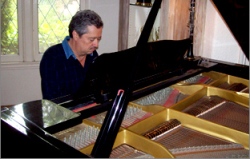
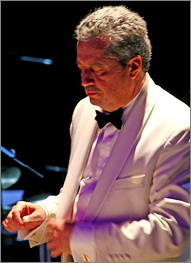 I started violin lessons at the age of 10 while growing up in Costa Rica. My teacher was Hugo Mariani, who was the conductor of the Orquesta Sinfónica Nacional of Costa Rica. At a very early age I started re-writing my violin exercises, which drove my teacher crazy. I told him that the exercises were boring and that I could make them much better. He suggested to me that I might be interested in studying composition. Maestro Mariani recommended that the 1st flute player in the Sinfónica give me solfeggio lessons and I took off from there. I later convinced my parents to send me to live with and uncle and aunt in Boston so I could study further. I went to high school in Boston and there I met Henry Lasker who truly is responsible for my first 3 years of composition and orchestration lessons. By the time I graduated high school I had composed a work for piano and orchestra, a ballet suite for orchestra and numerous chamber works for all kind of ensembles.
I started violin lessons at the age of 10 while growing up in Costa Rica. My teacher was Hugo Mariani, who was the conductor of the Orquesta Sinfónica Nacional of Costa Rica. At a very early age I started re-writing my violin exercises, which drove my teacher crazy. I told him that the exercises were boring and that I could make them much better. He suggested to me that I might be interested in studying composition. Maestro Mariani recommended that the 1st flute player in the Sinfónica give me solfeggio lessons and I took off from there. I later convinced my parents to send me to live with and uncle and aunt in Boston so I could study further. I went to high school in Boston and there I met Henry Lasker who truly is responsible for my first 3 years of composition and orchestration lessons. By the time I graduated high school I had composed a work for piano and orchestra, a ballet suite for orchestra and numerous chamber works for all kind of ensembles.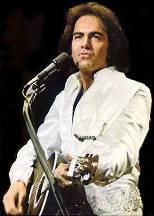 Upon graduation from high school I moved to New York to attend Manhattan School of Music. I was very disappointed when I got there as I found I was re-hashing everything I had already studied with Lasker. After a while, I decided to study privately and left the school early. I became active in writing concert music and vocal music for the theater and even scored two short films, my first film scoring experience. During that time I collaborated on the ballet Trinity that became a staple in the repertoire of the Joffrey Ballet. All this exposure led me to being asked to write arrangements for pop singers and that led into arranging for recording artists. That’s how I came to the attention of Neil Diamond and his producer Tom Catalano. They invited me out to Los Angeles to work on their arrangements for a new album they were planning. I worked for Diamond for four years on various albums including his classic Hot August Night. Soon after that I became involved in the score for Jonathan Livingston Seagull, for which I was to provide all the orchestral background music.
Upon graduation from high school I moved to New York to attend Manhattan School of Music. I was very disappointed when I got there as I found I was re-hashing everything I had already studied with Lasker. After a while, I decided to study privately and left the school early. I became active in writing concert music and vocal music for the theater and even scored two short films, my first film scoring experience. During that time I collaborated on the ballet Trinity that became a staple in the repertoire of the Joffrey Ballet. All this exposure led me to being asked to write arrangements for pop singers and that led into arranging for recording artists. That’s how I came to the attention of Neil Diamond and his producer Tom Catalano. They invited me out to Los Angeles to work on their arrangements for a new album they were planning. I worked for Diamond for four years on various albums including his classic Hot August Night. Soon after that I became involved in the score for Jonathan Livingston Seagull, for which I was to provide all the orchestral background music.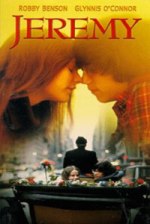 Actually I came to that realization much earlier in my life. When I composed my first full work for piano and orchestra at age 15, I realized I was home. Composing was my future, it had to be my life. Just a few years later I found that I could do extremely well at arranging and conducting for artists. I found that art form to be very rewarding and actually a lot of fun and a good living. However, when I had the chance to compose my first full length feature film, Jeremy, in 1973 I really arrived at loving the art of scoring for films and I felt I had another destiny to fulfill.
Actually I came to that realization much earlier in my life. When I composed my first full work for piano and orchestra at age 15, I realized I was home. Composing was my future, it had to be my life. Just a few years later I found that I could do extremely well at arranging and conducting for artists. I found that art form to be very rewarding and actually a lot of fun and a good living. However, when I had the chance to compose my first full length feature film, Jeremy, in 1973 I really arrived at loving the art of scoring for films and I felt I had another destiny to fulfill.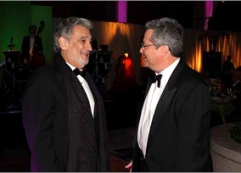 Working with great singing artists is an incredible experience. They are all very different not only as people but as artists. You very much learn to adjust your work to the needs of each individual artist. I have to say I loved them all! I could see why each one of them are stars. I understood the magic each one possessed. I could see the spark of each of their amazing gifts. The work with Plácido Domingo became quite a connection for me that later led to my work for him with the Los Angeles Opera.
Working with great singing artists is an incredible experience. They are all very different not only as people but as artists. You very much learn to adjust your work to the needs of each individual artist. I have to say I loved them all! I could see why each one of them are stars. I understood the magic each one possessed. I could see the spark of each of their amazing gifts. The work with Plácido Domingo became quite a connection for me that later led to my work for him with the Los Angeles Opera.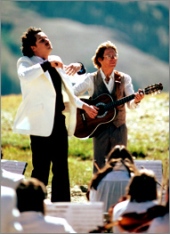 John was a very special friend for me. We worked together on many projects for a good 25 years at least. The instrumental album was one of many. I always felt that many of John’s songs were like American folksongs and would become part of American tradition. I told John many times that his songs could live in the concert hall one day. Recently I had the chance to show that very idea on a CD entitled Great Voices Sing John Denver.
John was a very special friend for me. We worked together on many projects for a good 25 years at least. The instrumental album was one of many. I always felt that many of John’s songs were like American folksongs and would become part of American tradition. I told John many times that his songs could live in the concert hall one day. Recently I had the chance to show that very idea on a CD entitled Great Voices Sing John Denver. 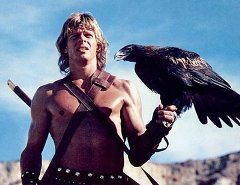 I was a last minute addition to the film. They started with another composer and were not satisfied. The director heard a recording of my Violin Concerto # 2 and decided that was the kind of music he wanted for the film. Of course, I see my concerto as very far away from The Beastmaster, but whatever works to get the assignment!
I was a last minute addition to the film. They started with another composer and were not satisfied. The director heard a recording of my Violin Concerto # 2 and decided that was the kind of music he wanted for the film. Of course, I see my concerto as very far away from The Beastmaster, but whatever works to get the assignment!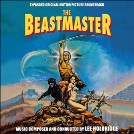 Oh my gosh, I didn’t even know they were doing that!!! Would you keep me updated on their progress, please?
Oh my gosh, I didn’t even know they were doing that!!! Would you keep me updated on their progress, please?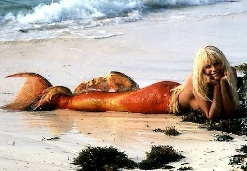 I love the movie Splash; it is a gem of a movie. I had done two television movies with Ron Howard, Skyward and Skyward Christmas. Skyward had the legendary Bette Davis in it! Anyway, that’s how I came to work on Splash. Though they decided on a song for the end credits, which is why we did the Rita Coolidge recording, I was able later to provide my original piano and orchestra version on my CD with Gerhardt and the London Symphony Orchestra.
I love the movie Splash; it is a gem of a movie. I had done two television movies with Ron Howard, Skyward and Skyward Christmas. Skyward had the legendary Bette Davis in it! Anyway, that’s how I came to work on Splash. Though they decided on a song for the end credits, which is why we did the Rita Coolidge recording, I was able later to provide my original piano and orchestra version on my CD with Gerhardt and the London Symphony Orchestra.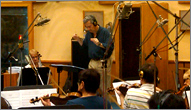 I began my career aiming for the concert world. My first works were chamber works and pieces for solo instruments. Everything grew from there, writing more ambitious works for full orchestra. Later when I got very involved in film music, I determined that I would continue my concert work. I thought a lot about writing opera as well. I tried setting scenes from plays as my first forays into the operatic medium. I wrote my first one act opera in 1976 by setting the Kahlil Gibran play Lazarus and His Beloved. In 1978 I composed the full length Violin Concerto # 2 for Violin and orchestra. From there I continued my concert work alongside my film work. My most recent work is my first full length opera Dulce Rosa.
I began my career aiming for the concert world. My first works were chamber works and pieces for solo instruments. Everything grew from there, writing more ambitious works for full orchestra. Later when I got very involved in film music, I determined that I would continue my concert work. I thought a lot about writing opera as well. I tried setting scenes from plays as my first forays into the operatic medium. I wrote my first one act opera in 1976 by setting the Kahlil Gibran play Lazarus and His Beloved. In 1978 I composed the full length Violin Concerto # 2 for Violin and orchestra. From there I continued my concert work alongside my film work. My most recent work is my first full length opera Dulce Rosa.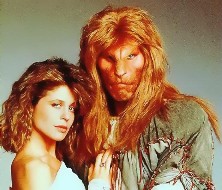 Beauty and the Beast was a very special event in my life. The producers really wanted me for the score and were looking for a theme for the whole series. When I saw the film of the pilot episode for the first time, I became very emotional about it and the theme came out of those feelings. It turned out to be a wonderful signature for that series.
Beauty and the Beast was a very special event in my life. The producers really wanted me for the score and were looking for a theme for the whole series. When I saw the film of the pilot episode for the first time, I became very emotional about it and the theme came out of those feelings. It turned out to be a wonderful signature for that series.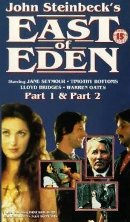 I had read the novel growing up. I loved the works of John Steinbeck. I saw the Kazan movie but as good as it was it was only a few chapters of the novel. When I was approached to score the mini-series, which would be the entire book, I was ecstatic. I totally relished working on that score. The main theme has had quite a life since then, both as an instrumental and as a song. To me it still all sounds great.
I had read the novel growing up. I loved the works of John Steinbeck. I saw the Kazan movie but as good as it was it was only a few chapters of the novel. When I was approached to score the mini-series, which would be the entire book, I was ecstatic. I totally relished working on that score. The main theme has had quite a life since then, both as an instrumental and as a song. To me it still all sounds great.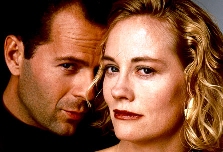 What an adventure that was! I first read the script to the two hour pilot which had not been filmed yet. I loved the script, but I worried that it was a little too sophisticated for a weekly series. I was asked to compose some thematic ideas based on the script. I wrote 5 themes of which one became the main theme and later the title song. When I first saw a rough cut of the pilot I was very taken by the magical chemistry between Bruce Willis and Cybill Shepherd. Wow, did that all take off!
What an adventure that was! I first read the script to the two hour pilot which had not been filmed yet. I loved the script, but I worried that it was a little too sophisticated for a weekly series. I was asked to compose some thematic ideas based on the script. I wrote 5 themes of which one became the main theme and later the title song. When I first saw a rough cut of the pilot I was very taken by the magical chemistry between Bruce Willis and Cybill Shepherd. Wow, did that all take off!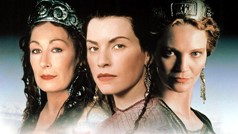 I loved working on The Mists of Avalon. I like the haunting legends of the Arthurian Women and the novels of that period. I wanted to infuse a sense of the Medieval and Celtic past into the score. Uli Edel was very supportive, but was not involved much in the score. I worked mostly with the producer Mark Wolper. We wanted some unusual sounds along with the sweep of the orchestra. I used the female voice, sung beautifully by Aeone, who also wrote a lyric to one of my themes, to represent the inner voice and soul of the women. I also used the exotic and otherworldly Esraj, the Indian stringed instrument. I used a lot of different percussion elements from Asian to Middle Eastern sounds to add to the exotic quality. I also brought in Tony Hinnigan, of Titanic fame, to play some beautiful ethnic flute. This was all set beautifully against the symphonic orchestral palette.
I loved working on The Mists of Avalon. I like the haunting legends of the Arthurian Women and the novels of that period. I wanted to infuse a sense of the Medieval and Celtic past into the score. Uli Edel was very supportive, but was not involved much in the score. I worked mostly with the producer Mark Wolper. We wanted some unusual sounds along with the sweep of the orchestra. I used the female voice, sung beautifully by Aeone, who also wrote a lyric to one of my themes, to represent the inner voice and soul of the women. I also used the exotic and otherworldly Esraj, the Indian stringed instrument. I used a lot of different percussion elements from Asian to Middle Eastern sounds to add to the exotic quality. I also brought in Tony Hinnigan, of Titanic fame, to play some beautiful ethnic flute. This was all set beautifully against the symphonic orchestral palette.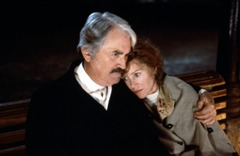 Old Gringo was at its best in the original cut by director Puenzo, before the studio cut it down and tried to “commercialize” it, a mistake on the part of the studio. Perhaps one day the original Puenzo cut can be restored to the original director’s version. I was assigned to this film based on my score from the Mexican documentary film El Pueblo Del Sol. It was a dramatic and epic love story, just my kind of score.
Old Gringo was at its best in the original cut by director Puenzo, before the studio cut it down and tried to “commercialize” it, a mistake on the part of the studio. Perhaps one day the original Puenzo cut can be restored to the original director’s version. I was assigned to this film based on my score from the Mexican documentary film El Pueblo Del Sol. It was a dramatic and epic love story, just my kind of score.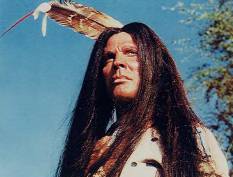 I was approached to do Winterhawk at the last minute. The producers had started with another composer and I guess they changed their minds and contacted me in a panic. I was touring at the time, but I would be in New York in 2 weeks’ time. We could record there. I had to write 55 minutes of music in 10 days! I decided instantly to get help. I contacted two old New York buddies. One of them was my great colleague William Goldstein and the other none other than one of my former teachers Nicolas Flagello. Nic had worked with Maurice Jarre on Dr. Zhivago and k new film scoring really well. I composed all the main themes, except the Little Smith theme which Goldstein created. We all went to work creating cues and orchestrating like crazy. I did envision the choir to add to the epic beauty and the mysticism of the legend. It turned out extremely well despite the mad dash to the finish line. It did flip me out to have my old teacher Nic in the booth supervising the recording while I conducted the orchestra. What a surprising reunion of teacher and student.
I was approached to do Winterhawk at the last minute. The producers had started with another composer and I guess they changed their minds and contacted me in a panic. I was touring at the time, but I would be in New York in 2 weeks’ time. We could record there. I had to write 55 minutes of music in 10 days! I decided instantly to get help. I contacted two old New York buddies. One of them was my great colleague William Goldstein and the other none other than one of my former teachers Nicolas Flagello. Nic had worked with Maurice Jarre on Dr. Zhivago and k new film scoring really well. I composed all the main themes, except the Little Smith theme which Goldstein created. We all went to work creating cues and orchestrating like crazy. I did envision the choir to add to the epic beauty and the mysticism of the legend. It turned out extremely well despite the mad dash to the finish line. It did flip me out to have my old teacher Nic in the booth supervising the recording while I conducted the orchestra. What a surprising reunion of teacher and student.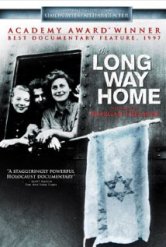 To me documentaries are in truth dramatic films. I approach the score for a documentary film as if I am telling the story and sharing the emotions of the characters. The old concept of tracking documentaries with canned music just never worked for me. I felt that they needed to be handled as dramas and scored properly to picture.
To me documentaries are in truth dramatic films. I approach the score for a documentary film as if I am telling the story and sharing the emotions of the characters. The old concept of tracking documentaries with canned music just never worked for me. I felt that they needed to be handled as dramas and scored properly to picture.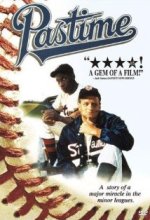 I love baseball, and this film got to me with its touching poetic style. What was funny is the way the producers auditioned the composers. Instead of contacting us one at a time, which is the normal way, they held a screening and invited us all to see the film at once. It was very embarrassing to show up at a movie house in Burbank for the screening and find about 20 other excellent composers there all trying not to stare at each other. Ultimately the director loved my CDs and once he heard my theme we were fine.
I love baseball, and this film got to me with its touching poetic style. What was funny is the way the producers auditioned the composers. Instead of contacting us one at a time, which is the normal way, they held a screening and invited us all to see the film at once. It was very embarrassing to show up at a movie house in Burbank for the screening and find about 20 other excellent composers there all trying not to stare at each other. Ultimately the director loved my CDs and once he heard my theme we were fine.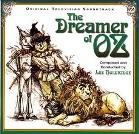 I love that film. I had worked a lot with director Jack Bender and he recommended me to the producers. I was very fortunate to be hired for that film. I particularly relished creating the fantasy and the Americana quality of that music. I was so pleased that the score was released on CD.
I love that film. I had worked a lot with director Jack Bender and he recommended me to the producers. I was very fortunate to be hired for that film. I particularly relished creating the fantasy and the Americana quality of that music. I was so pleased that the score was released on CD.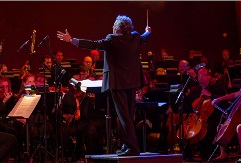 Opera has always been an important quest for me. I started composing scenes for operas in the 1960s while I was studying and getting started in music. In 1976 I composed a full one act opera to the play in verse by Kahlil Gibran entitled Lazarus and His Beloved.
Opera has always been an important quest for me. I started composing scenes for operas in the 1960s while I was studying and getting started in music. In 1976 I composed a full one act opera to the play in verse by Kahlil Gibran entitled Lazarus and His Beloved. I was very pleased to be one of the composers conducting at the Varese Sarabande Halloween Concert. I conducted a suite for flute and orchestra of the score for Something Wicked This Way Comes, by Georges Delerue and my own Theme From Beauty and the Beast. It is interesting to note from a historic perspective that I was one of the original composers that helped Varese Sarabande get started. Some of my early releases were on their label.
I was very pleased to be one of the composers conducting at the Varese Sarabande Halloween Concert. I conducted a suite for flute and orchestra of the score for Something Wicked This Way Comes, by Georges Delerue and my own Theme From Beauty and the Beast. It is interesting to note from a historic perspective that I was one of the original composers that helped Varese Sarabande get started. Some of my early releases were on their label.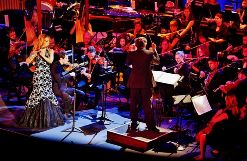

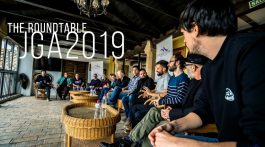
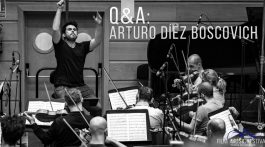
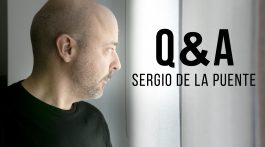
No hay comentarios